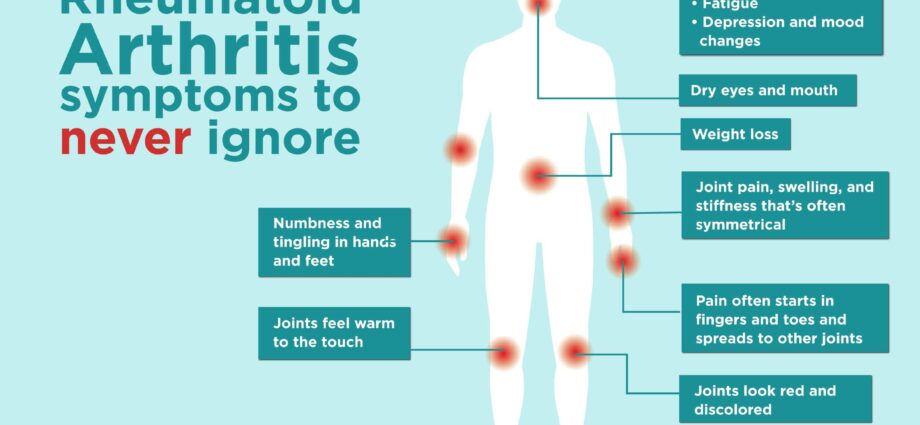Nội dung
Các triệu chứng của bệnh viêm khớp dạng thấp (thấp khớp, viêm khớp)
Triệu chứng ban đầu
- Lợi ích đau (or tenderness) in the affected joints. The pain is worse at night and in the early morning, or after a period of prolonged rest. They often cause a nocturnal awakening in the second part of the night. They can be continuous and have a considerable effect on morale.
- Le sưng (edema) of one or, most often, several joints. As a general rule, the involvement is “symmetrical”, ie the same group of joints is affected on both sides of the body. These are often the wrists or joints of the fingers, especially those located closest to the hand;
- The affected joints are also hot and sometimes red;
- A sự cứng morning joint, which lasts for at least 30 to 60 minutes. This stiffness is attenuated after the “rusting” of the joints, that is to say after having mobilized and “warmed” them. However, the stiffness can return during the day, after a prolonged period of inactivity;
- Fatigue is very present in this disease, often from the start. It can be very disabling and difficult for those around you to understand. It is linked to the autoimmune process and inflammation. It can be associated with a lack of appetite.
- Fever may be present during flare-ups.
Sự tiến triển của các triệu chứng
- The more the disease progresses, the more difficult it becomes to use or move normally the affected joints;
- New joints can be affected;
- Nhỏ hard bags (not painful) can form under the skin, especially on the back of the ankles (Achilles tendons), elbows and near the joints of the hands. These are “rheumatoid nodules”, present in 10 to 20% of affected people;
- Depression, caused by pain, the chronicity of the disease and all the life changes it imposes, can occur.
Other symptoms (not affecting the joints)
In some people, the autoimmune process of rheumatoid arthritis can attack various các cơ quan in addition to the joints. These forms may require a more aggressive therapeutic approach.
- A drought of mắt và ngột ngạt (a Gougerot-Sjögren syndrome), present in about a quarter of those affected;
- Sự suy giảm của tim, in particular of its envelope (called pericardium) which does not always cause symptoms;
- Sự suy giảm của phổi đến eo, which may also be related to or aggravated by medications;
- Inflammatory anemia.
chú ý La viêm khớp dạng thấp often manifests itself symmetrically, reaching the same joints on both sides of the body. This sign distinguishes it from osteoarthritis, which usually affects the joints on one side at a time. |










